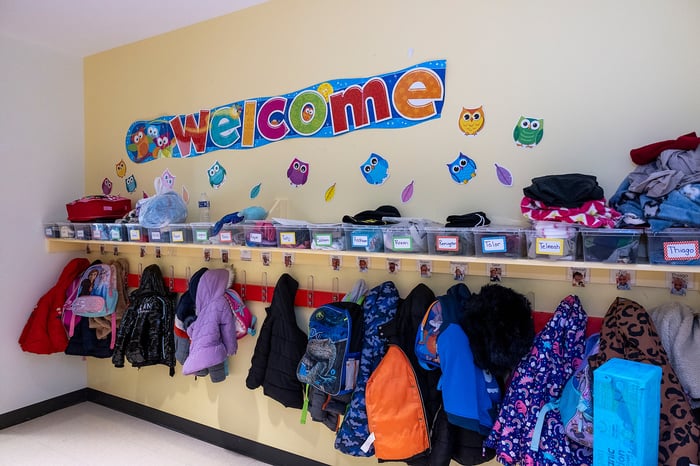Inclusive Education Starts Here: A Checklist for Transformative Present Levels of Performance in IEPs
Administrators • 5 min read • Oct 16, 2023 7:19:00 AM • Written by: Sarah Sandelius

Have you ever daydreamed about having IEPs that are the Beyoncé of student support? In this blog, we’ll take a deep dive into the essential elements of high-quality Present Levels of Performance (PLOP), also known as PLAFF (Present Levels of Academic Achievement and Functional Performance), which are the cornerstone of a solid Individualized Educational Program (IEP). This deliberate approach to describing a student’s strengths and needs helps IEP Teams design interventions and services meticulously customized for each student… which leads to more student learning and success.
So, let's get started.
Use Multiple Sources of Data
Effective PLOPs are grounded in comprehensive data. This data should be derived from various sources, including normed or criterion-referenced assessments. For example, for students with behavioral needs, employing a functional behavioral assessment to consider the four functions of behavior (social attention, tangible rewards, escape, sensory stimulation), educators can paint a more accurate picture of the student's strengths, areas for improvement, and unique needs. This data-driven approach ensures that the PLOP accurately reflects the student's abilities and provides a solid foundation for setting goals and planning interventions.
Provide Evidence from Multiple Stakeholders
Collaboration is the heart of developing effective PLOPs. Gathering input from multiple stakeholders, including teachers, parents, therapists, and students, increases the likelihood that the IEP team will present a holistic picture of what the student is able to do. With a more inclusive approach to describing the student’s present needs, the IEP can be written to provide helpful support to teachers around differentiating and designing specialized instruction in the least restrictive environment.
Use Strengths-Based Language
Language plays a pivotal role in crafting meaningful PLOPs. High-quality PLOPs consistently employ strengths-based language. Rather than merely focusing on deficits, they emphasize the student's capabilities and potential. This positive approach not only boosts student confidence and belonging but also fosters an optimistic and supportive learning environment—a hallmark of inclusive teaching strategies.
State Student Needs and Impact Clearly
A well-constructed PLOP should be crystal clear when articulating the student's needs in specific areas of development. These needs should be closely linked to the impact of the student's disability on their participation in the general education curriculum. The more precise the statement, the easier it is for the IEP team to effectively design targeted interventions and goals that address these needs.
Detail Student Needs at Functional and Performance Levels
As stated above, effective PLOPs take a holistic view of the student's needs, addressing functional and performance levels. Functional needs encompass broader life skills, while performance needs pertain to specific academic tasks. A well-rounded PLOP ensures that no aspect of the student's development is overlooked, leading to a more comprehensive and effective IEP.
 Putting it Into Action
Putting it Into Action
Developing high-quality PLOPs is not just about meeting regulatory requirements; it's a pivotal step in ensuring that students with disabilities receive the tailored support they need to succeed. By employing multiple sources of data, engaging stakeholders, employing strengths-based language, articulating precise needs, and addressing both functional and performance levels, educators and IEP teams can create PLOPs that serve as the foundation for meaningful, effective, and student-centered education plans. Ultimately, these well-constructed PLOPs pave the way for enhanced learning experiences and improved outcomes for students with disabilities within the general education curriculum.

***
Want More?
If you're eager to implement these strategies into your school or district's practices, here are a few actionable tips:
- Share this blog post with your case managers and discuss which components resonate with them most. Identify the through line from PLOPs to other IEP components.
- Use our checklist to conduct a soft audit of a sample set of IEPs. Look for trends in areas of strength and areas where educators might need more support. Ensure that the PLOPs get to the heart of what each student needs to learn and thrive.
- Consider offering specialized training for your team, even if you have seasoned educators. Engaging in norming, building shared language, and exploring case studies can improve the quality of documents for all staff.
Ready to Make an Impact For Your Most Diverse Learners?
Sarah Sandelius
Our Latest
Related Articles

December 16, 2024 | Administrators
From Belief to Practice: 5 Mindsets That Make Inclusion Work
Transform special education in your school through 5 essential mindsets that drive inclusive practic...

July 28, 2025 | Administrators
Four Pillars of Inclusive Teaching: A Leader's Guide to Building Capacity
Discover the four evidence-based pillars that distinguish highly effective inclusive teachers. Use a...

September 4, 2024 | Administrators
Strategic Staffing in Special Education: Choosing the Right Model for Success
Discover three innovative special education staffing models to address teacher shortages and create ...

